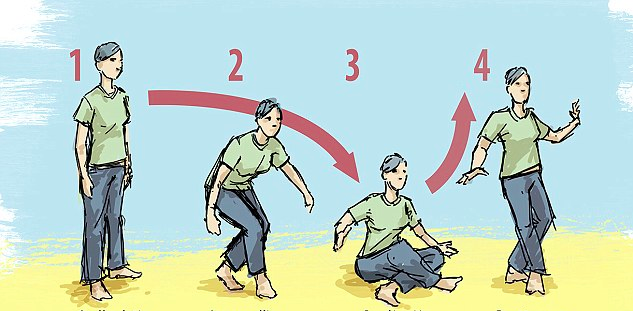What CAN You Do? (Take this test.)
Aug 05, 2015
Interesting question, isn’t it?
What does it mean?
Simple.
What.
Can.
You.
Do?
Anything you want to do?
Specifically - can you do anything you want to do physically?
Or do you find you have some… limitations.
I’m not talking about financial limitations that are currently keeping you from hiking Mt. Kilamanjaro or something like that.
What I’m talking about is, can you move like you did when you were a little kid?
Can you run, jump, sprint, hang, climb, pull yourself up and over a fence, swim, dive, or do whatever it is you used to do?
I watch my 4 year old and my 20 month old and they literally do whatever it is they can imagine. They’re not limited by stiff muscles and achey joints.
They don’t stretch, mobilize, foam roll, or “movement prep” themselves before they climb on the couch and then jump off, go swimming, play with the diggers outside, go for a bike ride, or run around the house chasing each other.
They just “do.”
Here’s an interesting test developed by Brazilian physician Cluadio Gil Araujo that predicts your risk of dying in the next 5 years, that was published in the European Journal of Preventative Cardiology1. (Lovely thought, isn’t it? Still, better to know than not…) It’s called the Sitting Rising Test (SRT).
And you simply stand up, cross your feet, sit down, and then stand back up.
Without using your hands for balance.
That’s HALF the test.
The other half?
Standing back up.
Again - without using your hands.
[caption id="attachment_4253" align="alignleft" width="633"]
 The Sitting Rising Test[/caption]
The Sitting Rising Test[/caption]
(Credit: The Daily Mail2.)
You score 5 points for going all the way down without a hand or arm touching or losing your balance.
And you score another 5 for standing up without using your hands to push off or losing your balance.
Each time a hand, arm, or knee is used for support, you lose a point. You lose half a point when you lose your balance at any time during the test.
How’d you score?
Me?
What do you think?
A perfect 10, baby. :-)
But a decade ago, ten years younger, that wouldn’t have been the case.
My body was “frozen.”
Locked up.
Stiff joints and sore muscles. I was a prisoner inside my body. At 32, I felt 62. Maybe older.
And I was doing all the “latest-greatest” movement prep stuff.
Still no joy.
I kept getting worse and worse.
Why?
Because I wasn’t doing what was necessary to stay young and - here’s the key word - the word of the day - Resilient.
I couldn’t just do anything I wanted, when I wanted.
Break into a full sprint?
Yeah, right. Not without pulling something.
Play catch or frisbee?
Not without my lower back getting crabby.
Roll around with my kids?
Good thing I didn’t have kids back then. I would’ve short-changed them.
The point is, you were made to be resilient.
You were always supposed to move the way you did when you were a kid.
We call that your “original strength” and you’re never supposed to lose it.
If you found the SRT challenging or you find that you can’t do the things you once could, I have good news for you:
It's reversible.
You can get better.
That's because you were made to move.
A lot.
And you still can.
You can regain your “original strength" - the strength you had to do whatever you wanted when you were young.
And it’s super-easy to do.
It doesn’t take long and the payoff far outweighs your investment.
Learn more here.
REFERENCES / CREDITS:
1 "Ability to sit and rise from the floor as a predictor of all-cause mortality." European Journal of Preventive Cardiology. December 13, 2012 2047487312471759
2 Image from: https://www.dailymail.co.uk/sciencetech/article-2858804/Can-exercise-test-predict-DEATH-People-struggle-sitting-rising-test-five-times-likely-die.html
Comments (0)
Please login to comment.